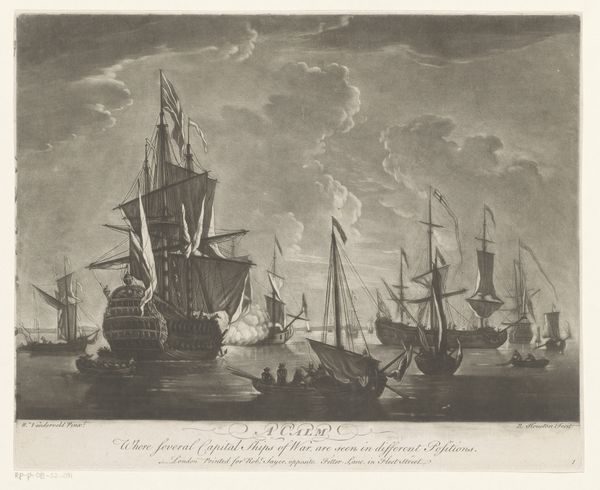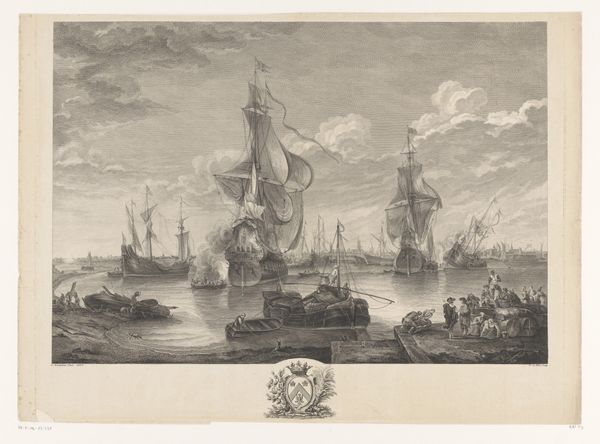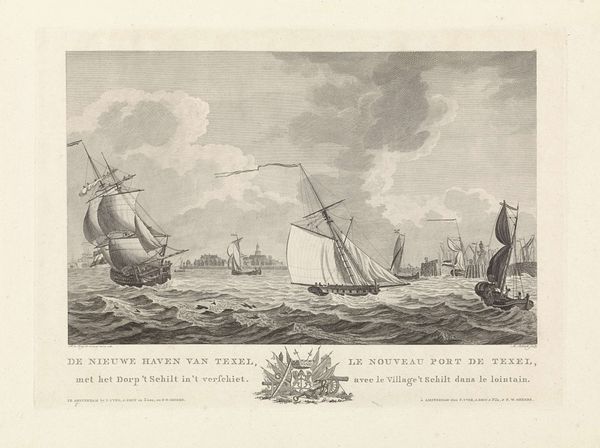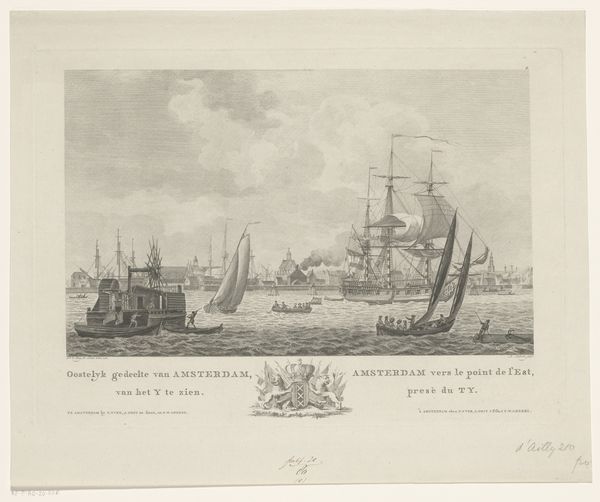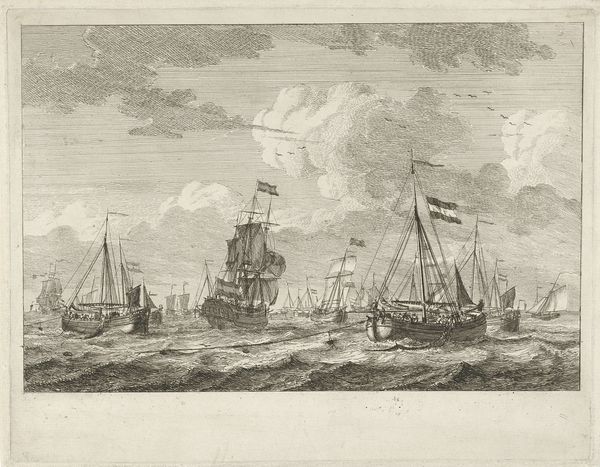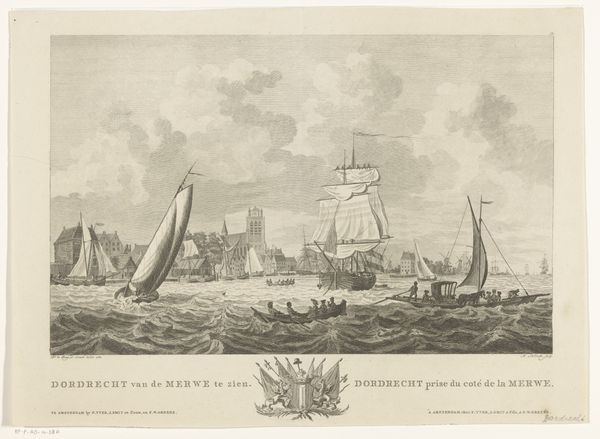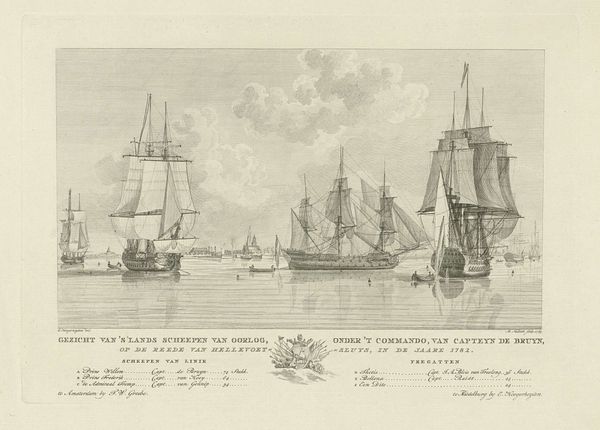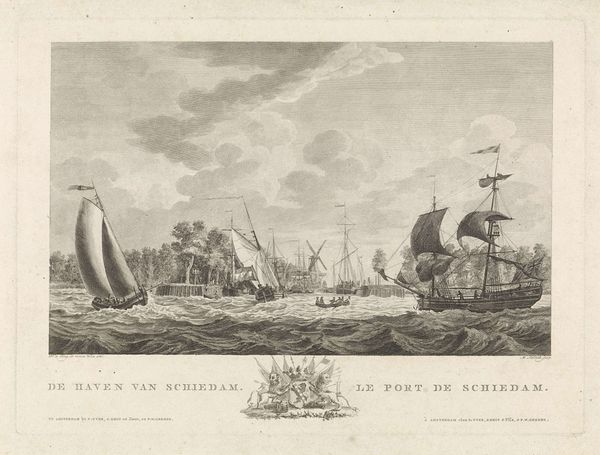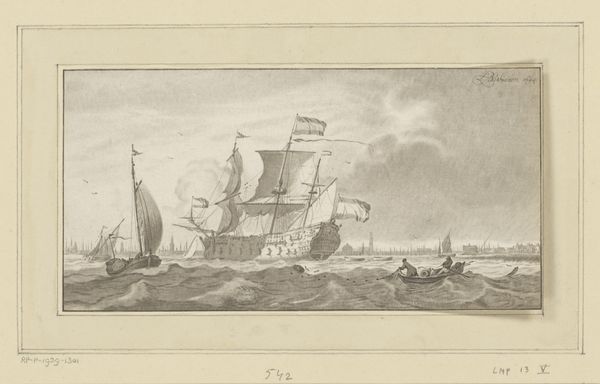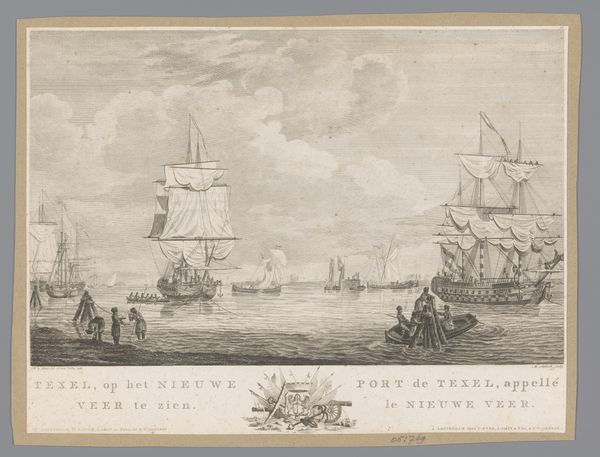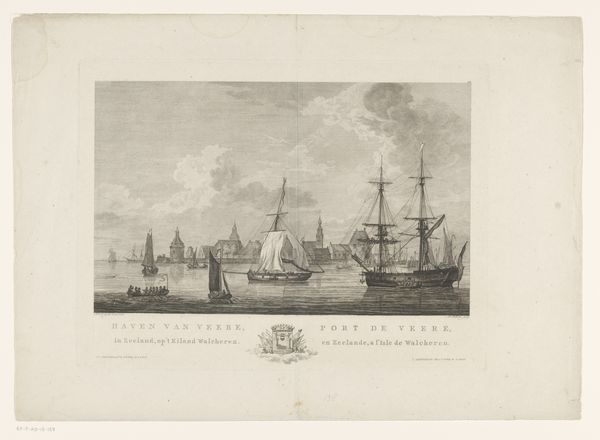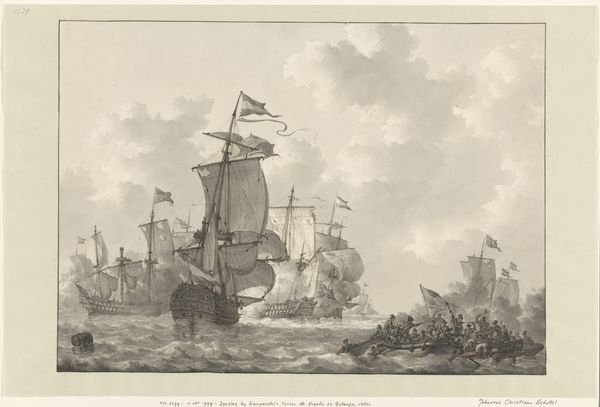
Dimensions: height 284 mm, width 395 mm
Copyright: Rijks Museum: Open Domain
Editor: So, this is "Gezicht op de haven en rede van Hellevoetsluis," or "View of the Harbour and Roads of Hellevoetsluis," made between 1781 and 1787 by Mathias de Sallieth. It's an engraving, which I find striking, given the incredible detail. What stands out to you about this piece? Curator: The intricacy achieved through the engraving process is certainly remarkable, yes. But I'm most drawn to considering the material and labor involved in producing and circulating such an image. Engravings like these weren't just about aesthetics; they were crucial in shaping economic and political realities. Editor: How so? Curator: Consider the maritime activity depicted. This wasn't merely picturesque; it represented trade, naval power, the movement of goods and people—all things facilitated by the very material existence of ships, sails, and the physical act of navigation. How might an image like this, reproduced and distributed, influence investment, or even public sentiment toward naval affairs? Editor: I see your point! It’s not just a pretty picture of ships, it’s about the whole industry and even political implications linked to shipbuilding and maritime trade. The print itself also acted as a commodity that contributed to that network. So, thinking about it in terms of materials and production opens up a whole new perspective beyond just art history. Curator: Precisely. It underscores how art is intrinsically linked to material culture and the broader socioeconomic landscape. Were it not for the material basis of boats and ships, of international trade and travel, the cityscape here and therefore the print could never exist. Editor: That makes me see this print—and others—in a totally different light. I'll definitely be thinking more about the production process, the materials involved, and how art objects fit into larger social and economic systems now. Curator: Excellent. Approaching art through its materiality and means of production offers incredibly rich insights, changing the very purpose of how we see and record art.
Comments
No comments
Be the first to comment and join the conversation on the ultimate creative platform.

